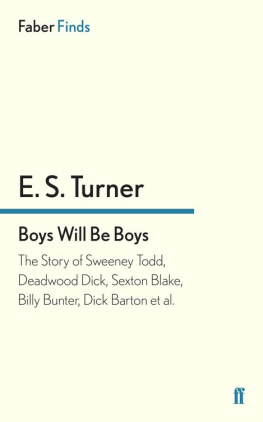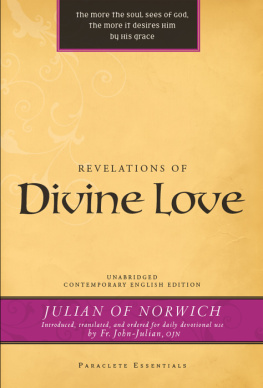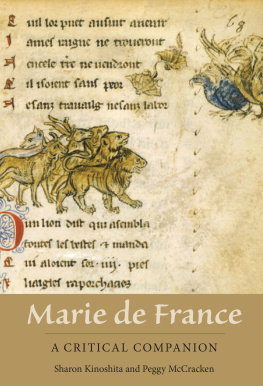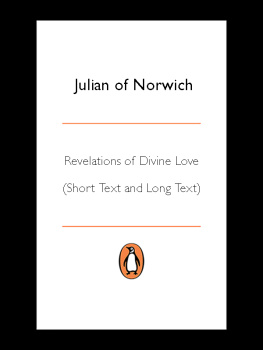JULIAN OF NORWICH,
THEOLOGIAN
JULIAN OF NORWICH,
THEOLOGIAN
DENYS TURNER

Copyright 2011 by Yale University.
All rights reserved.
This book may not be reproduced, in whole or in part, including illustrations, in any form (beyond that copying permitted by Sections 107 and 108 of the U.S. Copyright Law and except by reviewers for the public press), without written permission from the publishers.
Yale University Press books may be purchased in quantity for educational, business, or promotional use. For information, please e-mail sales.press@yale.edu (U.S. office) or sales@yaleup.co.uk (U.K. office).
Set in Fournier type by Duke & Company, Devon, Pennsylvania.
Printed in the United States of America.
Library of Congress Cataloging-in-Publication Data
Turner, Denys, 1942
Julian of Norwich, theologian / Denys Turner.
p. cm.
Includes bibliographical references and index.
ISBN 978-0-300-16391-9 (cloth : alk. paper) 1. Julian, of Norwich, b. 1343. Revelations of divine love. 2. SinChristianity. 3. SalvationChristianity. I. Title.
BV4832.3.J863T87 2011
230.2092dc22
2010049526
A catalogue record for this book is available from the British Library.
This paper meets the requirements of ANSI/NISO Z39.481992 (Permanence of Paper).
10 9 8 7 6 5 4 3 2 1
This boke is begonne by Goddes gifte and his grace,
but it is not yet performed, as to my sight.
Julian of Norwich, A Revelation of Love
CONTENTS
PREFACE
SOME OF MY ACADEMIC colleagues seem to know what they think before they talk. Others, among whom I count myself, need to talk in order to know what they think. As with speech, so with writing. Because I did not know what I really thought about the theology of Julian of Norwichs A Revelation of Love, I decided to write a book to find out. At first I envisaged a short work. But as I wrote and came to better understand the complexity of her thought, I discovered that it was impossible to make any one thing clear to myself without attempting to get clear about many others, with the result that Julians connections of ideasintricate and subtlebegan to spin out like a web. And so the manuscript grew, though I believed as I wrote, and still believe now, that it is of no greater prolixity than was due in justice to her thought. If anything, it is still too short.
I have been reading Julian for many years, but have not until now tried to write about her at any length, because I felt sure of two things: first, that her Revelation offers a complex, rich, and also coherent vision that falls into the shape of a genuinely systematic theology; and second, that I had not got the hang of how it does so. I read what few books and papers there are that attempt a thorough treatment of that theology, and was not convinced that they fully succeeded where I knew I had so far failed entirely. There was only one thing to doattempt to write myself into an understanding of how that theology works, of what drives it, and how it resolves. This book is the result. I doubt that it succeeds any better than the others do. But if it fails, it will do so of a somewhat different purpose.
Julians work in the form of the Short Text is the first writing in the English vernacular of which we can be sure that its author was female, and I am convinced that the Long Text, written twenty or more years later, is one of the great works of medieval theology in any language by an author of either gender. It is time, in my view, to assess that theology, contained in but two versions of a short monograph and limited as it is in range, by the most demanding standards of comparison with her medieval peersAnselm, Bernard of Clairvaux, Bonaventure, Thomas Aquinas. Of course, in quantity of output and comprehensiveness of theological range, Julian does not rank with these great masters. But, in that what she writes is truly theology in some sense (or, as we will see, senses) that all four would have recognized, she surely does.
However, even on the score of theological character and quality, such a grand comparison is not easily made, if only for the reason that A Revelation of Love did not fit comfortably within standard taxonomies of theological genre in her own times, let alone does it do so in ours, insofar as those taxonomies are limited to categories of monastic styles of biblical theology, scholastic styles of systematic theology, and otherwise to the mystical. As I shall explain in the first chapter, Julian does not exactly invent a new form of theological writing unfamiliar to readers of her age, for others write in similar ways.are elicited through a process of progressive intensification and complex elaboration of particular and personal experience. Hers is not a theology derived deductively, inferentially extruded from some set of general theological principles, nor one derived directly from an intensive exploration of explicitly cited scriptural sources. Situated in time in precisely recorded detail (Julian tells us the date and circumstanceshe is, so far as she knows, dying), the raw material of her theology consists in a set of sixteen shewings revealed to her in person: sometimes in visual image, sometimes in the form of words spoken to her directly by the Lord, sometimes in the form of understandings given to her, some bidden, some unbidden. All three forms of showing are but starting points for Julians interrogation of them for their mutual consistency and degree of correspondence with the teaching of the Church or her own experience concerning one key issue, the problem of sin (the core issue addressed by this book). For prima facie, she sees conflict rather than concordance between the two. The style of her elaborations is often that of one puzzled by her theological data and is consequently of a problemsolving character. But more generally, her style is much like that of the variation movements of classical sonata form. Having announced her first shewing, each of the succeeding fifteen is, she says, in one form or another, a variation on the first, and, in the end, all fifteen return to it. Moreover, in each of them Julian is to be found testing, exploring, expanding, and releasing the potentialities of the basic thematic material, often modulating away from it into distant and apparently unrelated keys, or transforming the tiniest melodic features of each shewing into major thematic developments of theology. In fact, so impressed was I by the force of this musical analogy for Julians theological strategies that at one time I thought of giving this monograph the title Variations on a Theme of Julian.
For I thought then, and by and large still do, that I should do nothing in this book but continue in the style of the theological reflections of her Revelation by writing some further variations on a theme of Julian, with the justification in so doing that at the end of her Long Text Julian tells us that her boke is not yet performed. It isnt only this concluding remark that invites a complexity of further response; everything about her writing demands one. Julian, as I shall explain at many points in what follows, systematically refuses to finish, because she intends theological incompleteness. And she intends theological incompleteness on grounds that are themselves theological, or at least meta-theological, that is to say, because she knows that what alone completes the theological is also what transcends its powers, namely, the beatific vision. The theologian, in short, is forced to raise more questions than she can answer, for the questions that perforce arise within the limits of theology of necessity can be answered for now only inaccessibly beyond it. Of theological necessity, then, is her boke not yet performed.
Next page
















